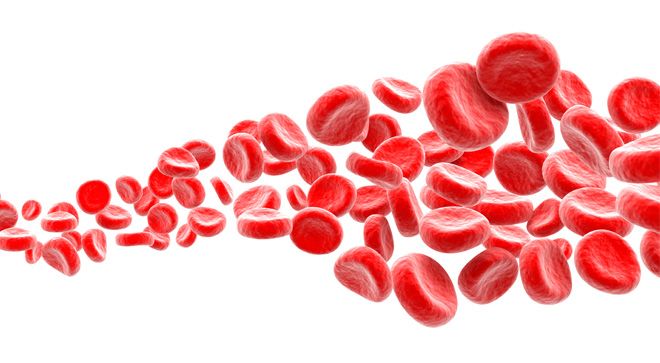Graft-versus-host disease (GVHD) prophylaxis using posttransplant cyclophosphamide (PTCY) remains a valid option for patients with myelodysplastic syndromes (MDS) compared with antithymocyte globulin (ATG)– based GVHD, according to a retrospective, multicenter, registry-based study published in Blood Advances.
“This study suggests that GVHD prophylaxis using PTCY instead of ATG in this setting remains a valid option. Further prospective randomized studies would be essential to confirm these results,” study authors wrote.
MDS is characterized by abnormal marrow cellular maturation and are a heterogenous group of myeloid malignancies that frequently lead to varying degrees of cytopenia and an inherent risk for transformation to acute myeloid leukemia (AML). Currently, allogeneic hematopoietic stem cell transplantation (allo-HSCT) remains the only curative treatment option for this group of patients, depending on individual characteristics, including age and performance status. Due to advances in allo-HSCT, conditioning regimens and intensity have led to lower rates of transplant-related toxicity, thereby potentially allowing older patients or those with comorbidities to be eligible for such a therapeutic approach.
Furthermore, improvements have been made in the treatment of GVHD prophylaxis, contributing to lower toxicity rates. Additionally, ongoing trials have demonstrated the advantage of antithymocyte or antilymphocyte globulins over observation or placebo treatment with a lower incidence of chronic GVHD. Based on this prior research, investigators performed a retrospective, European Society for Blood and Marrow Transplantation registry-based study to further investigate patients with MDS who previously were treated with allo-HSCT from matched unrelated donors (MUD) or an HLA-mismatched unrelated donor (MMUD), as well as received either ATG or PTCY as GVHD prophylaxis.
Glossary:
Graft-versus-host disease (GVHD): a condition that occurs when the immune cells from transplanted tissue attack the recipient's body cells.
Overall survival (OS): time patients live with their cancer, regardless of their disease status, until death of any cause.
Allogeneic hematopoietic stem cell transplantation (allo-HSCT) a medical procedure that replaces a patient's bone marrow with healthy blood-forming cells from a donor.
GVHD prophylaxis: the use of immunosuppressive drugs to prevent the development of GVHD after a transplant.
Progression-free survival: a measurement of how long a patient lives with a disease, such as cancer, without the disease worsening.
Relapse-free survival: measures how long a patient survives without symptoms after primary treatment ends.
Neutrophil engraftment: when absolute neutrophil count is greater than 500 or more neutrophils per cubic millimeter of blood for three days in a row.
Enrolled on this retrospective, multicenter, registry-based study were patients with myeloid malignancies who underwent allo-HSCT in the setting of MUD with outcomes approaching those of transplants with matched related donors. Eligible participants included those who underwent their first allo-HSCT for MDS between 2012 to 2019 from a MUD or a MMUD, as well as received either PTCY-based or ATG-based GVHD prophylaxis. Excluded from the study were patients who had received allo-HSCT with other donor types, alternative stem cell sources or ex vivo T-cell depletion.
Continuous pretransplant variables were summarized using the median and interquartile range (IQR) and categorical pretransplant variables were summarized using percentages within the group of patients with available data.
The investigators evaluated differences between PTCY-based and other prophylaxis subgroups, using χ2 tests for categorical variables and t tests for continuous variables. Among 503 patients diagnosed with MDS and 206 with AML transformation at allo-HSCT, risk stratification indicated that 6.6% were very low, 16.1% low, 27.4% intermediate, 29.5% high and 20.5% very high risk. The PTCY cohort had a higher likelihood of receiving HMA pre-transplant. They more frequently received myeloablative conditioning and had lower use of methotrexate and calcineurin inhibitors, while using MMF more often than the ATG group.
The primary outcomes studied in the investigation were overall survival, progression-free survival, and grade 3 to 4 aGVHD and extensive cGVHD-free, and relapse-free survival. Secondary outcomes included relapse, non-relapse mortality, aGVHD and cGVHD, and neutrophil and platelet engraftment.
Investigators reported that the cumulative incidence of neutrophil engraftment at 28 days was significantly better with ATG (93% versus 85% in the PTCY group), the median time to neutrophil engraftment was 16 days versus 20 days and platelet engraftment occurred at a median of 15 days versus 21 days (with cumulative platelet recovery at day 100. Notably, this was also significantly better with ATG (90% versus 86% for the PTCY group). Furthermore, with PTCY, the primary graft failure was significantly higher again compared with ATG (6% versus 3%).
In regard to the utility of PTCY, grade 2 to 4 aGVHD incidence was 23% versus 30%. Comparatively, grade 3 to 4 aGVHD incidence did not differ significantly between the PTCY and ATG cohorts (11% versus 13%). There was also no difference in cGVHD incidence (37% with PTCY and 38% at five years. The incidence of severe chronic GVHD showed a tendency to be lower with post-transplant cyclophosphamide at 4% compared with anti-thymocyte globulin at 8%, as well as a tendency for improved cGVHD-free survival, with rates of 24% for PTCY versus 20% with ATG.
At a median follow-up of 4.4 years, 445 patients had died. Mortality causes were comparable between the two groups; relapse or disease progression accounted for 37.8% of deaths in the PTCY group and 38.3% in the ATG group. The five-year overall survival was 58% with PTCY versus 49% with ATG. Progression-free survival over five years was higher with PTCY at 53% versus 44% with ATG. The five-year GVHD-free, relapse-free survival rates were 36% for PTCY and 31% for ATG. The cumulative five-year relapse incidence was similar between groups, at 22% for PTCY and 25% for ATG, and the five-year non-relapse mortality was 25% for PTCY versus 31% for ATG.
For matched unrelated donor versus MMUD transplants, five-year overall survival was higher in the MUD cohort compared with the MMUD cohort at 54% versus 44%. Notably, among MUD transplants, PTCY yielded the best overall survival, while outcomes for MUD-ATG and MMUD-PTCY were similar, and MMUD-ATG showed the worst outcomes.
“The results of this study suggest that for patients with MDS who proceed with UD allo-HSCT, PTCY is a valid GVHD prophylaxis option that may improve [progression-free survival] and [overall survival] and decrease the rates of grade 2 to 4 aGVHD at the expense of delayed engraftment and an increased graft failure rate. These results applied to both MUD and to MMUD, but MUD donors are still associated with a better outcome than MMUD donors,” investigators concluded.
Reference:
"Unrelated donor transplantation with posttransplant cyclophosphamide vs ATG for myelodysplastic neoplasms." By Dr Yves Chalandon, et al. Blood Advances.
For more news on cancer updates, research and education, don’t forget to subscribe to CURE®’s newsletters here.




